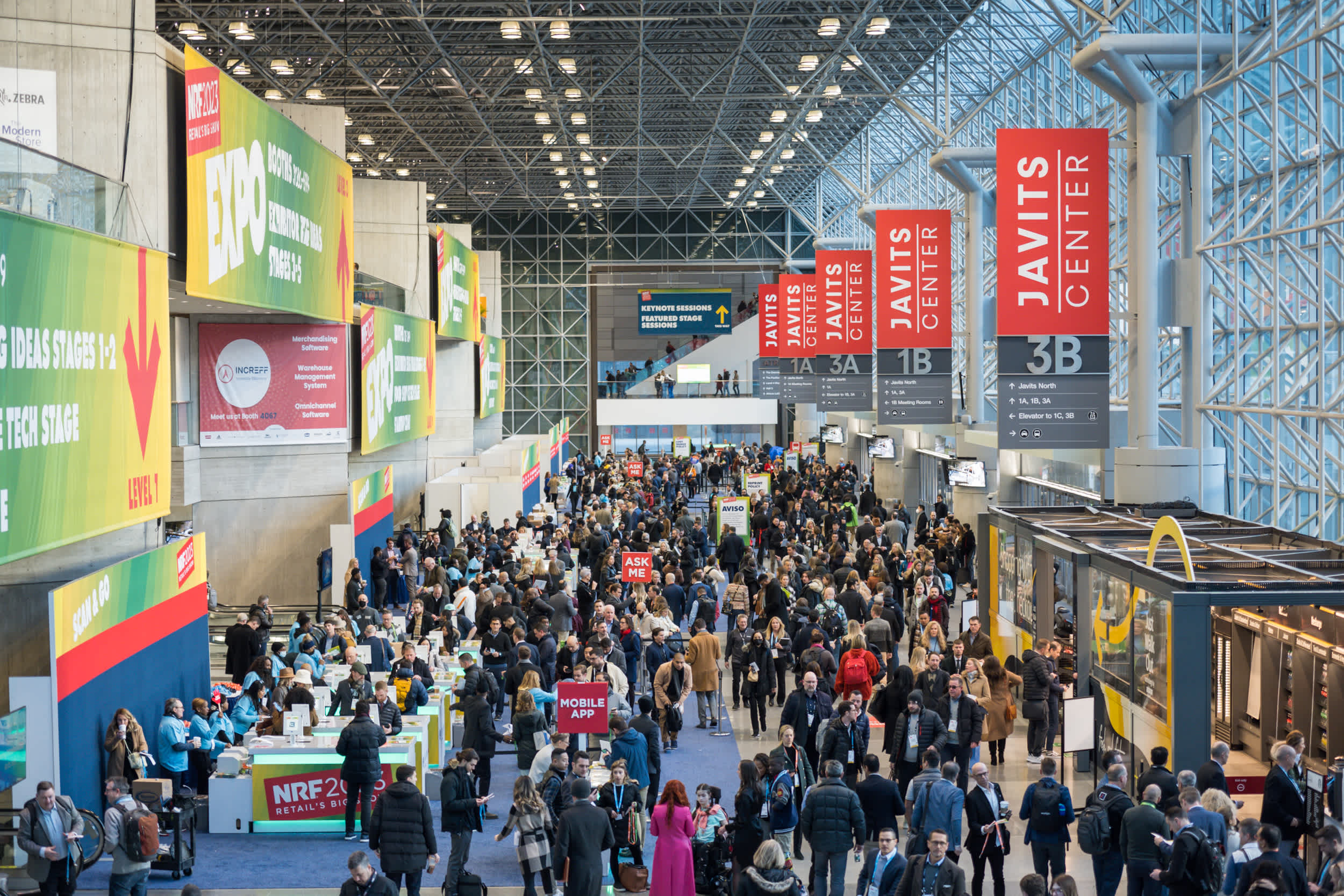
NRF Recap: 3 retail trends that impact CPGs

Photo credit: National Retail Federation.
Retailers and consumer packaged goods (CPG) companies have proven themselves capable of quickly adapting to changes in shopper needs and behavior over the past three years. As evidenced by the behemoth retail conference NRF 2023, more changes are afoot in the ever-evolving retail landscape. Here are 3 trends for CPGs and retailers to focus on to deliver exceptional customer experiences in 2023 and beyond.
In a fireside chat with NRF President and CEO Matthew Shay, Kroger CEO Rodney McMullen said that when customers shop, “they don’t ever talk about it in the ways we talk about it, in terms of online, or store. They just talk about it as what’s easy for them at that particular point in time.”
Gathering—and acting on—data insights is essential for delivering those easy and frictionless customer experiences. That includes having a strategy and the tools for managing big data such as clickstream data, noted Katie Bogenschutz, vice president of enterprise data product management at 84.51°, who led a session, [“84.51°: Helping Customers One Click at a Time"](https://www.databricks.com/event/nrf "�“84.51°: Helping Customers One Click at a Time"") at the Databricks Theater. “If you don’t manage it [data] properly, you get into a spot where you can’t impact the customer experience,” she noted.
For example, with help from our software partner Databricks, 84.51° created Customer Insights score cards using Clickstream data that made it easier for CPG clients to visualize and understand online customer behavior, such as app versus web activity rates and how often customers visited a product detail page. “Now, CPGs can see how their brands are performing online and make informed decisions,” Bogenschutz said.
It's not a secret that customers expect consistency across channels. However, as omnichannel strategies mature, it’s becoming clear that omnichannel isn’t about being everywhere; it’s about understanding the interconnectedness of the customer experience.
Instead of maintaining separate presences on multiple channels i.e., online versus social versus in-store, brands are thinking critically about how their presence in one channel can inform and enhance experiences in other channels. “We’ve seen an interesting shift over the past 9 months,” said Brendon Gerisch, chief commercial officer at luxury men’s and womenswear John Elliott, in a panel discussion. “The customer more than ever wants to engage with product and we’ve been opening stores to enable that.” The company shares learnings from its stores that can enrich its ecommerce channel and vice versa.
CPG brands can also benefit from taking the approach that omnichannel strategies are most effective when insights are shared across channels and teams. R&D, for example, is enriched with shopper insights from multiple channels; packaging should ensure that technical aspects such as QR codes are met, etc.
Although they’re at different maturity levels, artificial intelligence, augmented reality and the metaverse are shaping the future of retail. Companies such as Google, Nvidia and a raft of startups showcased AI technology for helping retailers and brands improve forecast accuracy, optimize store layouts, accelerate shelf-checking, personalize recommendations and produce their own assets, such as photos, with generative AI.
And while the metaverse is still taking shape, companies are racing to create experiences and products for it. Think tools for converting 2D images into 3D objects, virtual stores and fashion galleries, metaverse wallets—even headsets that generate scents in the metaverse.
“These immersive experiences will be the next extension of your brand,” said Mike Buob, vice president of experience and innovation at Sogeti, at a Capgemini-hosted panel discussion about the next generation of immersive experiences. Fellow panelist Andrew Cron, senior vice president and chief scientist at 84.51°, agreed, noting, “in the metaverse, you can truly personalize experiences.” Shoppers, for instance, would be able to customize their shopping environment; think “shopping in [the film] The Matrix while in the woods,” Cron suggested. And as the barriers between the metaverse and other channels fade, he continued, “companies will be able to give employees and customers better actual experiences.”
Visit our knowledge hub
See what you can learn from our latest posts.

